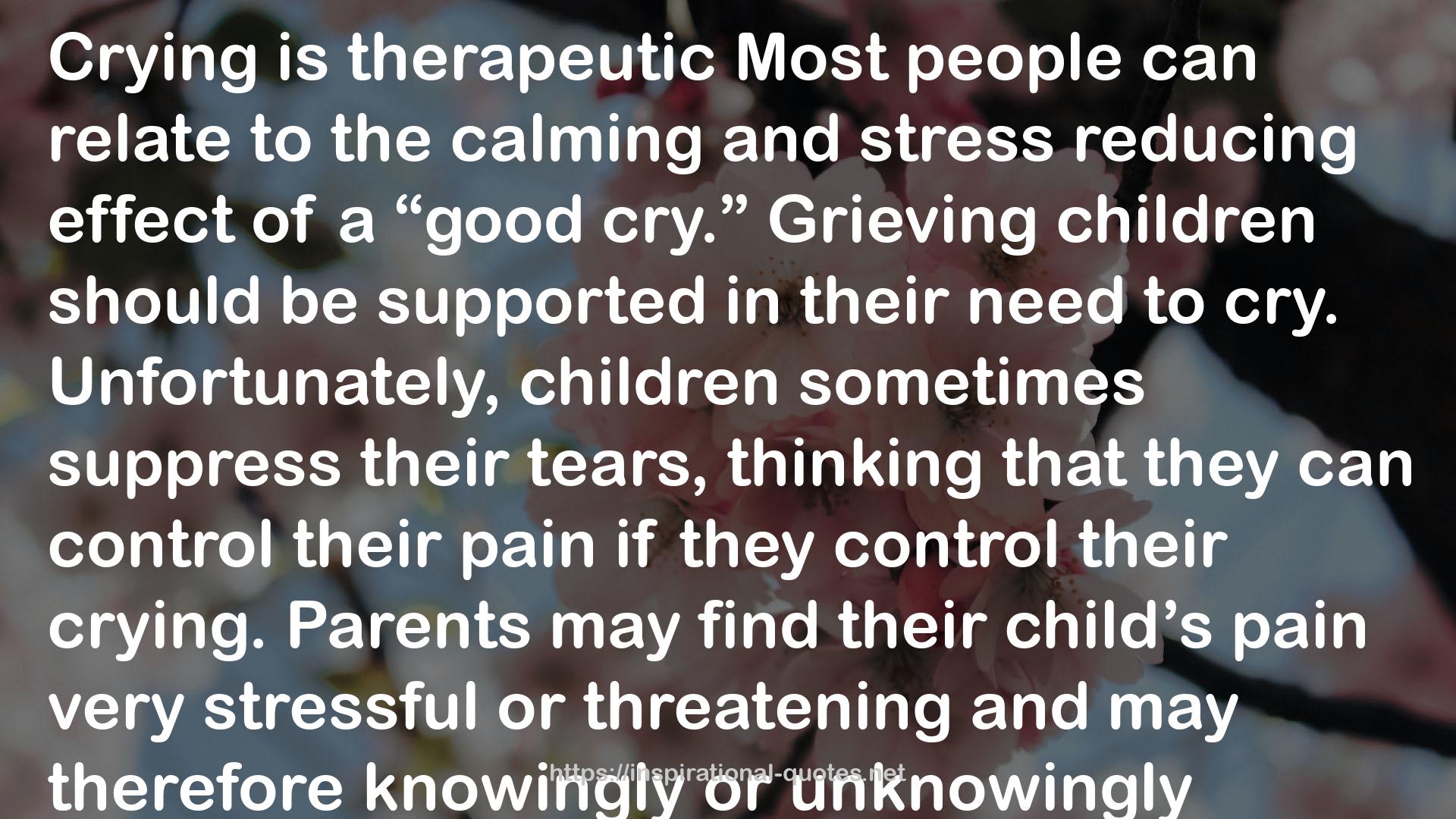" Crying is therapeutic Most people can relate to the calming and stress reducing effect of a “good cry.” Grieving children should be supported in their need to cry. Unfortunately, children sometimes suppress their tears, thinking that they can control their pain if they control their crying. Parents may find their child’s pain very stressful or threatening and may therefore knowingly or unknowingly suppress natural expressions of grief. They may try to distract the child by promising a treat if he stops crying; cutting the feelings short (“Hush, hush”); minimizing the feelings (“You’re OK now”); contradicting his reality (“You’re going to love it here”); criticizing (“Stop making such a fuss”); embarrassing (“You’re too big to act like such a baby”); or threatening (“Stop it right now or I’ll give you something to cry about”). Crying should be supported with empathy and nurturing. It might be helpful to say something like, “I can tell that you are feeling very bad. Maybe it is because we were just looking at pictures of Nana, and you’re thinking about her now and missing her. Let’s sit here together for a while and I’ll rub your back.” Don’t rush the toddler’s grief before she is ready to let go of it. When the crying has subsided, offer a cold glass of juice or a walk outside. Often, children are more receptive to being cuddled, making eye contact, and other attachment strategies after an episode of acute sadness. "
― , Toddler Adoption: The Weaver's Craft
